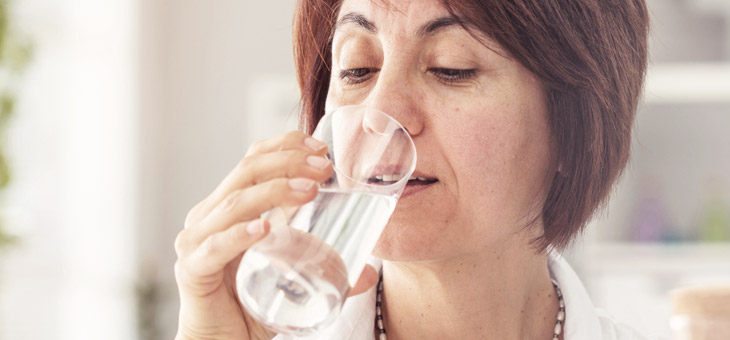Australian drinking water is ranked among the best in the world, giving us the privilege of clean, safe and tasty water, as well as bragging rights.
Tap water generally has a unique tang, which is influenced by plumbing, treatment and the original source.
So, what exactly makes our water taste so good – or in some cases, a little strange?
The Water Industry Operators Association of Australia conducts a yearly competition to bestow an Australian council with a trophy for the Best Tasting Tap Water in Australia.
Read: How to drink more water
Water samples are blind-tested and rated against a ‘tasting wheel’, which contains attributes such as sweet, sour, salty and bitter. It also contains other elements, such as earthy, mouldy, woody, chemical, fishy and medicinal. The ‘mouthfeel’ is characterised as “drying, stringent, cooling, oily, chalky, tingling or metallic”.
Do you taste chlorine?
One taste you’ve probably come across with tap water is chlorine. This is one of the main complaints about tap water.
While not desirable in water, chlorine is an effective disinfectant and a major defence against the spread of pathogens in our water supply.
If you live in an area with old or corroded pipes, you might notice a stronger chlorine taste because more of it is used to counter the risk of microbial contamination.
Read: Even light drinking raises death risk
If the chlorine flavour or smell bothers you, try boiling your water for several minutes. This will remove most of the chlorine.
What smells like rotten eggs?
If you notice the smell of rotten eggs in tap water, that’s usually caused by hydrogen sulphide or sulphur, which can be a result of water supply geology or decaying organic matter. As such, it should always be investigated.
Hard and soft
Tap water is often described as being either ‘hard’ or ‘soft’ and these attributes relate to the water’s origins and mineral content.
Hard water generally comes from limestone areas that are rich in calcium and magnesium carbonates, and can have a salty taste. With hard water, you might find it difficult to wash your hands because it prevents a soapy lather from forming. It also presents other problems, such as changing the flavour in tea and causing a mineral build-up inside water pipes and appliances, such as kettles.
Soft water is the opposite. It mostly comes from rainfall supplies, which generally contain very small amounts of sodium chloride (also known as table salt). If you have a rainwater tank, you might notice a metallic tang, which comes from the roof, tank and plumbing.
Strange tastes and odours from rainwater tanks should be investigated properly, since they might be the first signs of a problem. The last thing you want is to find out that your strange-tasting water is the result of decaying vegetation from overhanging trees or dead animals.
Read: Are you drinking water right?
The wrap-up
With our population increasing we are likely to see more and more of Australia’s water supply being treated against the spread of disease by the local or regional water industry.
Desalination has become increasingly important over the past 20 years. Currently, it’s only used when natural water storages deplete due to lack of rainfall. In Perth, however, it’s a permanent feature.
Luckily, some areas have great access to a relatively natural supply of high-quality raw water from safe storages and catchments. Melbourne, Brisbane, Sydney and many parts of Tasmania are some of the luckiest cities. In other places, such as Perth and Alice Springs, treated groundwater is the primary source of tap water.
Do you like the tap water where you live? What are the tastes or smells from your water? Why not share your observations in the comments section below?

